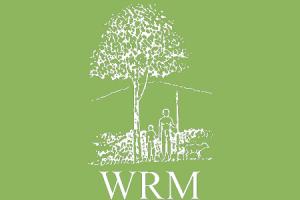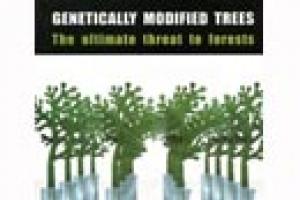Since 1996, in an attempt to control pollution, China's State Environmental Protection Administration has closed thousands of pulp and paper mills. "A significant portion of urban as well as rural water pollution problems came from industry and, in particular, the pulp and paper industry," commented the World Bank in a 2000 report about China's pulp and paper industry.
Large-Scale Tree Plantations
Industrial tree plantations are large-scale, intensively managed, even-aged monocultures, involving vast areas of fertile land under the control of plantation companies. Management of plantations involves the use of huge amounts of water as well as agrochemicals—which harm humans, and plants and animals in the plantations and surrounding areas.
Other information
3 June 2004
Other information
3 June 2004
In the early 1980s the Indonesian government launched an ambitious forestry plan entitled "Industrial Timber Plantation (HTI) and Pulp Industry Development." In the early stages of its development, pulpwood plantations were claimed to rehabilitate degraded land and to reduce the pressure on natural forests. This misleading propaganda was indeed intended to disguise an ambitious plan of the Indonesian government for the country to become a world major pulp and paper producer.
Other information
3 June 2004
Established in 1989, Advance Agro Public Company Limited is located in Prachinburi province. Its main business is producing and selling pulp and printing and writing paper. The company’s production capacity of bleached kraft pulp is 175,000 tons per year. It also produces bleached short-fibre pulp for two mills operated under Advance Agro Pulp, with a combined capacity of 427,000 tons as well as printing and writing paper, with an annual capacity of 250,000 tons. Along with its subsidiaries (High Tech Paper and Advance Paper), Advance Agro has an annual production capacity of 500,000 tons.
Other information
3 June 2004
Just meters beyond the outer wall of Tan Mai Paper mill, a thriving industry exists in the shade of coconut trees. In ponds where rice fields used to lie, local villagers stand chest deep in wastewater from the factory. Young men strain to lift nets out of the ponds, filled to the brim with the catch of the day: paper fiber emitted in the mill's wastewater.
Publications
2 June 2004
The debate on Genetically Modified Organisms (GMOs) has until now largely focused on agricultural crops and much less on genetically modified trees. This is understandable, given the fact that there are already several GM crops being commercially grown in many places of the world and given that many of them are aimed at directly or indirectly feeding human beings, whose health is thus potentially threatened.
Other information
3 May 2004
Maybe it's something in the water in Geneva that causes temporary memory loss. Or maybe it's the coffee. Whatever, the participants at the fourth meeting of the United Nations Forum on Forests (UNFF-4) held in Geneva in May seemed to be suffering from a form of collective amnesia.
Bulletin articles
3 May 2004
In many respects, there is very little difference between Swaziland and South Africa. Climate, topography, and geology are similar, so it is no wonder that the natural vegetation is much like that found in the South African Provinces of KwaZulu-Natal and Mpumalanga, that virtually enclose the Swazi Kingdom.
Bulletin articles
3 May 2004
In September 2003, we informed about an exotic pest which had attacked eucalyptus trees in Western Kenya (see WRM Bulletin Nº 74), and reflected on the inherent risk of the monoculture pattern.
Now, the harm has reached neighboring Uganda, with Mpigi, Luweero, Masaka, Kasese, Mbarara, Bushenyi, Mbale, Kapchwora, Tororo, Lira and Apac being the worst hit districts.
Bulletin articles
3 May 2004
Asia's forests are being destroyed at a staggering rate. China, which has become, virtually overnight, the second largest importer of logs in the world, trailing only the United States, has a lot to do with it. (The volume of uncut logs arriving in China has more than tripled since 1998 to over 15 million cubic meters.).
Bulletin articles
11 March 2004
Swaziland, a landlocked country with a population of 1,161,219 inhabitants in 17,363 sq km almost completely surrounded by South Africa, has timber as its second industrial activity after sugar.
During the Conference “Timber Plantations: Impacts, Future Visions and Global Trends” held in Nelspruit, South Africa, in November 2003, hosted by GeaSphere in association with the TimberWatch Coalition, Nhlanhla Msweli, from SCAPEI, gave a vivid testimony of Swaziland’s situation and grief linked to monoculture tree plantations.
Bulletin articles
11 March 2004
Local communities from all over Malaysia reject the country’s attempt to greenwash its timber industry. During the COP-7 meeting of the Biodiversity Convention in Malaysia in February, representatives for 253 indigenous, forest based communities presented a statement describing the Malaysian Timber Certification Council scheme, MTCC, as a scheme that "has caused, and continues to cause, the further marginalisation of our communities".
The recently launched campaign is ongoing, and signatures from additional communities rejecting MTCC are still coming in.
Bulletin articles
11 March 2004
The Malaysian Timber Certification Council scheme, MTCC, is set up to meet demands from the Western markets for a green stamp on tropical timber, and MTCC has been a pioneer among the national certification schemes from tropical countries to really invest in getting acceptance from the European market. Malaysian delegations, headed by the Minister of Primary Industries, have several times visited Europe, and the active promotion of their own scheme has worked.

